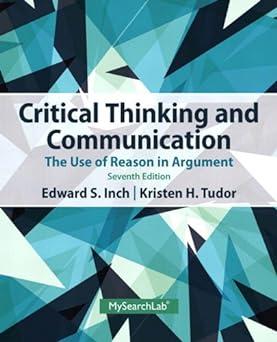A recent article by Stephanie Vozza in Entrepreneur challenged e-mail writers in professional settings to attempt to
Question:
A recent article by Stephanie Vozza in Entrepreneur challenged e-mail writers in professional settings to attempt to constrain the length of e-mail messages to five sentences.15 The goal, as with Orwell’s instructions, is to write clearly, concisely, and effectively. The challenge, she noted, is that people try to explain too much and go on for too long with the result that meanings get lost or confused.
Her recommendation is that professional e-mails be limited to answering the following five questions:
1. Who is sending the e-mail? In other words, the author should introduce himself or herself to the recipient.
2. What do you want of the recipient? What, specifically, is the author asking of the recipient?
3. Why are you asking the recipient? Presumably, an e-mail could have gone to any number of other people. Why this person? What is it about their position or their abilities that led you to write to them?
4. Why should be recipient “do” the request? There should be some reason for a person to take time and expend energy to perform the requested action.
5. What next? A well-written e-mail should offer the next steps once the request is accomplished.
This provides the recipient with a sense of how the response will be used and how it “fits” into a larger picture.
Take a look at your last e-mail to a professor or business colleague and analyze it using these criteria (and Orwell’s six rules for using language). How does it fare? Redraft it using these principles.
Does it seem clearer? Can you make it clearer and more concise? Try using these principles for one week and check with the recipients if they liked or did not like this approach compared with previous e-mails.
Step by Step Answer:

Critical Thinking And Communication The Use Of Reason In Argument
ISBN: 9780205925773
7th Edition
Authors: Edward S. Inch, Kristen H. Tudor






